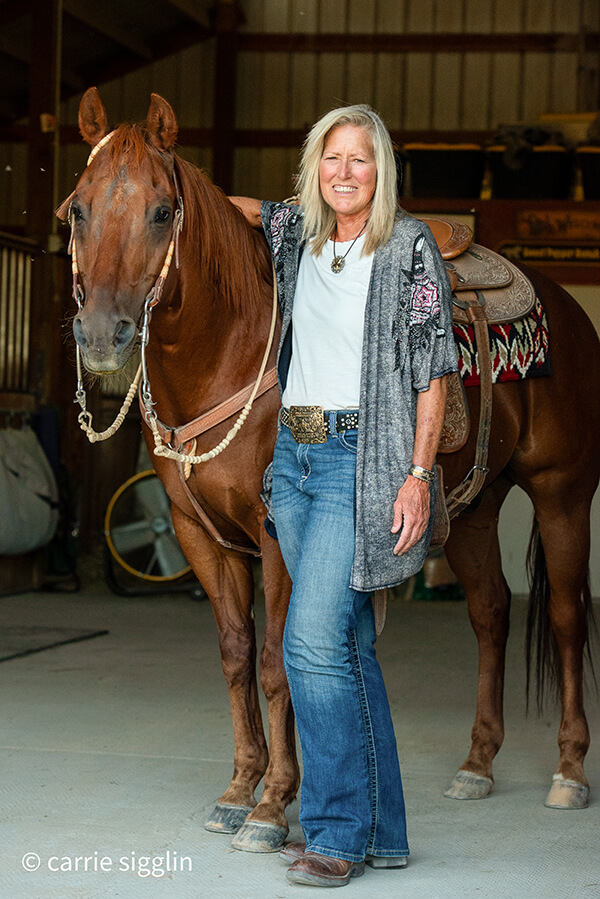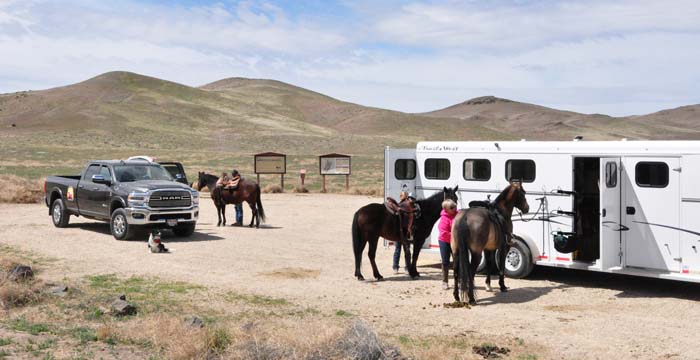Park with extra distance between rigs so no one is tempted to visit closely and so you can comfortably maintain a six to ten-foot distance from others. Avoid trailering with others in the same vehicle by driving separate rigs instead.
Typically, this monthly column focuses on smart, healthy, and eco-friendly choices for the property where you and your horses live. Now that the Northwest is beginning to reopen, let’s “hit the road” with some of those same wise ideals. Here are some tips and ideas for keeping yourself safe while hitting the trails and getting fresh air and exercise for you and your horses—sourced from a cadre of my thoughtful, experienced equestrian friends.
Choose the Right Trail
The “trail less traveled” is a good adage to keep in mind for today’s social distancing world. As much as possible, research and choose trail riding locales with fewer crowds. Consider less-popular locations as well as days or times when fewer people are likely to be riding. Be prepared to change your plans if, when you arrive at your destination, you find it’s already too crowded to safely distance yourself.
Trailer Tips
Avoid trailering together in the same vehicle with others outside of your household. Drive separate rigs instead.
Park with extra distance between rigs so no one is tempted to visit too closely. Be sure you can comfortably maintain a six to ten-foot distance from others.
Biosecurity
Avoid using public hitching posts or similar places to tie your horse at a trailhead. Instead, tie your horse to your own trailer and have others tie their horse(s) to their trailers as well.
Don’t handle horses being used by people outside your household. The same goes for tack—no sharing or handling each other’s bridles, saddles, grooming supplies, etc.
Bring your own water bottle and snacks and carry them in your own saddle bags. Now is not the time for sharing edibles!
Bring hand sanitizer and use it, especially if you are handling and eating food or using a public restroom. Wash your hands once you return home.
Trail Etiquette
If you are riding in a group, maintain at least six feet between riders (a recommended safety practice among riders even in normal times).
Remember to also maintain at least six feet of distance when passing a hiker, mountain biker, or another equestrian on the trail. This may require that someone moves 6 to 10 feet off the trail to allow the other to pass.
Now might be the time to wear that bandana you usually save for dusty rides—or wear a mask. It’s important to remember that wearing a mask is not protective for the wearer. It is meant to contain potential spread from the wearer to others. Learn more about how to properly wear a mask at www.cdc.gov/coronavirus/2019-ncov/prevent-getting-sick/diy-cloth-face-coverings.html.
Thoughtfully Evaluate Risks
Consider not riding if you live in a highly affected area with a maxed-out health care system.
If you are injured, seek out alternatives to an emergency room visit, such as orthopedic urgent care, or urgent care facilities labeled “clean” (where patients with any respiratory issues are not admitted and instead are sent to designated clinics set up specifically for handling potential COVID-19 positive cases). Call ahead since many medical practices are not seeing patients without appointments during these times.
After addressing any concerns, if you are still in doubt, stay safe and ride another day. Safety should always your primary consideration when riding. Avoid taking risks that might further burden a health care system already stretched thin by the current COVID-19 crisis—which includes maintaining their protective medical supplies.
Check out the Horses for Clean Water website for information on online classes, virtual individual consultations, tip sheets and other resources for horse keeping and land management education.
Published in July 2020 Issue:

Alayne Blickle began in the 1990’s as a pioneer in water conservation and natural resources conservation by creating the entrepreneurial consulting business, Horses for Clean Water, an award-winning internationally acclaimed education program that looks for horse-healthy, nature-based solutions to land management challenges. She continues this work today partnering with agencies, organizations, and horse owners throughout North America and worldwide. She is a regularly contributing writer and photojournalist to several equine publications.
Alayne lives with her horse trainer husband, Matt Livengood, in southwestern Idaho where they raise and train AQHA horses and mustangs on their eco-friendly horse ranch. Contact her through the Horses for Clean Water website or through their ranch website Sweet Pepper Ranch.
For more information contact Alayne at [email protected] or 206-909-0225.






